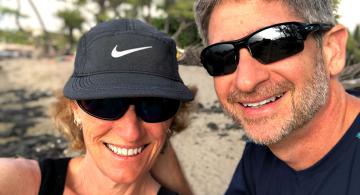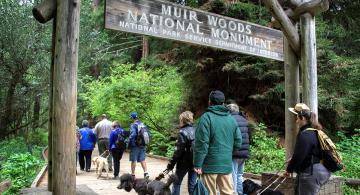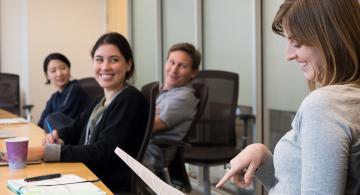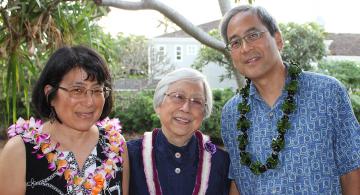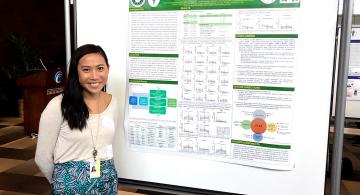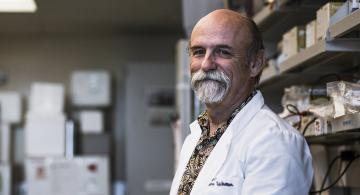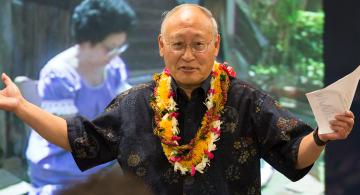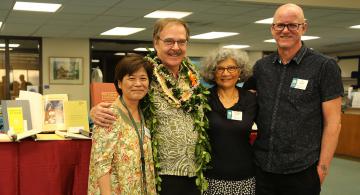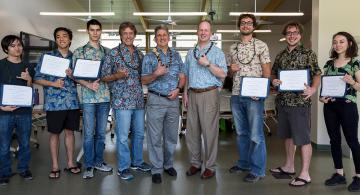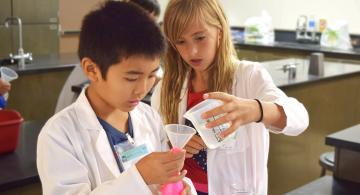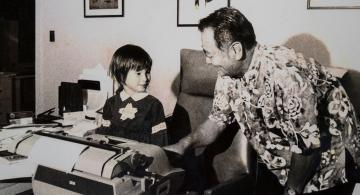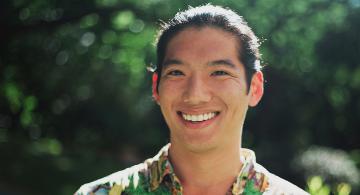Support from donors unleashes the incredible potential of a brilliant researcher. It is the partnership between donor, faculty, and students that creates new knowledge and transforms lives in Hawaiʻi and the world.
Each day, hundreds of faculty members and students throughout the state are engaged in groundbreaking research in areas as diverse as astronomy, cancer studies, teacher training and education, ethnic and cultural studies, government and public policies, ocean and earth science, international relations, high technology development, and business development in general.
In an increasingly competitive world, universities cannot rely solely on government funding to support research. It is the investment and vision of private donors that fuels the groundbreaking stages of research – research that may then be supported by government funding.
Individuals can make a difference, even in face of enormous obstacles. Cindi Punihaole, founder of the Kahalu‘u Bay Education Center, was my initial call-to-action. Meeting Ruth Gates was the catalyst for everything I did next.
Members of the Silicon Valley and San Francisco chapters of the American Council of the Blind field tested the UniD app at Muir Woods National Monument in April 2018.
Our mission is to clear the path for one hundred percent clean energy. There is barrier after barrier to get there, so our work is about clearing the obstacles.
Now, more than a hundred years after an ambitious young man and his picture bride began their story in America, their youngest child Esther Arinaga honors them with endowments in a tribute to their creativity, dedication, and struggle on behalf of others.
Graduate students are the future of research, so supporting their efforts is a privilege and a pleasure,” said Chancellor Emeritus Virginia Hinshaw, PhD.
The Barbara Kawakami Collection at the Japanese American National Museum in Los Angeles is “the most significant collection of Issei (first generation Japanese) immigration and plantation clothing in the world,” according to JANM.
To express his gratitude and affection for many of the Hamilton Librarians with whom he has worked for more than five decades, Al has endowed a new fund which he titled The Hawaiian and Pacific Collections Endowment in Honor of Its Faculty and Staff.
Winners of the 3rd University of Hawaiʻi President’s Green Initiative Awards were honored in a ceremony on February 8 at Hawaiʻi Community College’s Pālamanui campus as part of the 6th Annual Hawaiʻi Sustainability in Higher Education Summit.
The Saturday program began in 2008. Originally aimed at elementary-schoolers, it has expanded so students may continue from year to year. In the fall of 2017, it welcomed its first high-school learners. Now students participate at all grade levels, and this is just one of three outreach efforts headed by Wieczorek, CTAHR’s Interim Associate Dean for Academic and Student Affairs.
Douglas Yamamura dedicated his life to education. He attended the University of Hawai‘i at Mānoa in the 1930s. He was a principal and teacher at Waialua High School on O‘ahu, Hāna High School on Maui, and Kāpapala School on Hawai‘i Island. He earned his doctorate from the University of Washington, then returned to Honolulu where he was an education professor and head of the sociology department at Mānoa. From 1975 until his retirement in 1978, he served as Mānoa’s chancellor.
Robert Oda, whose work being supervised at JABSOM has earned him a scholarship named after Japan’s emperor.
